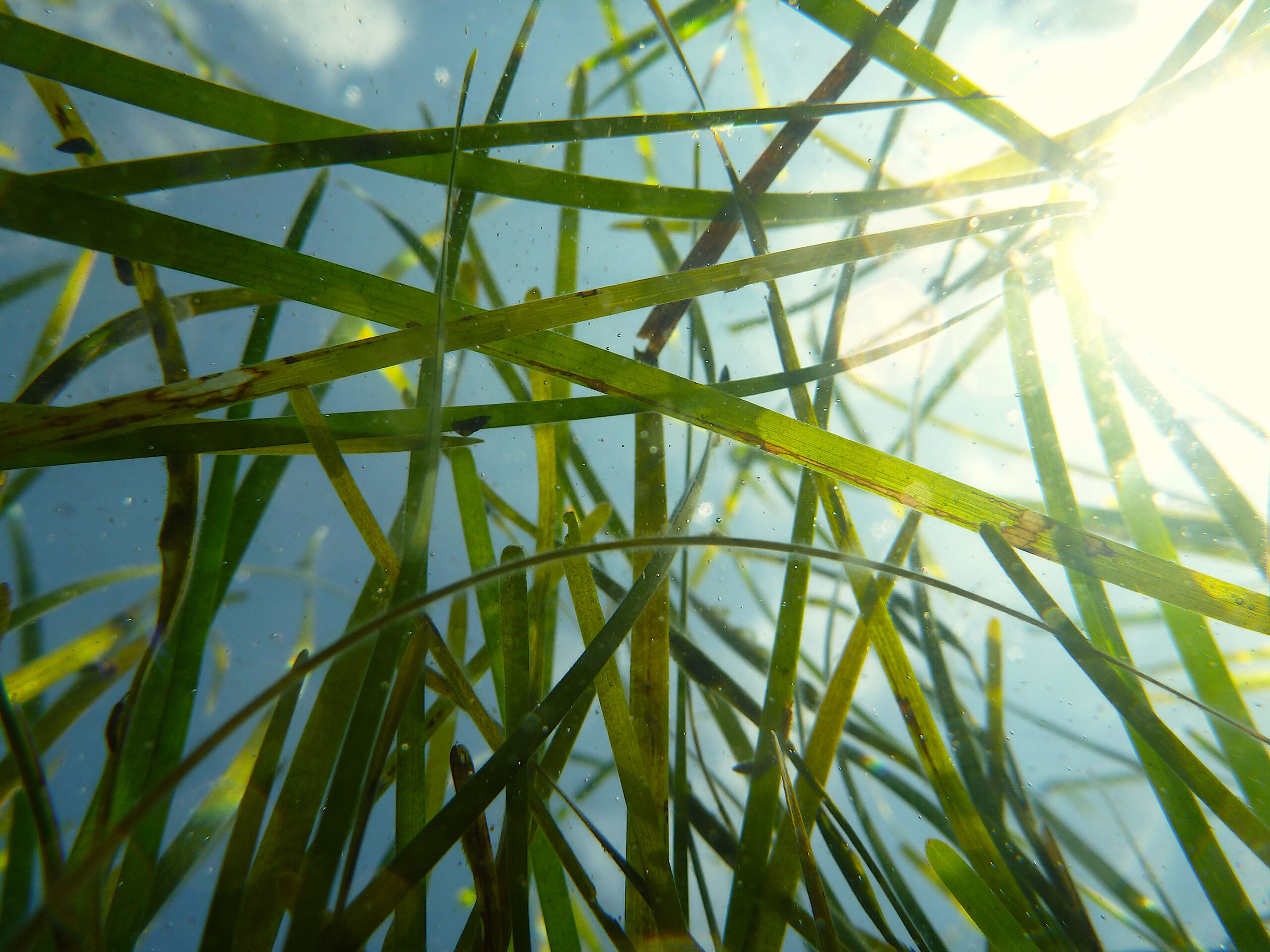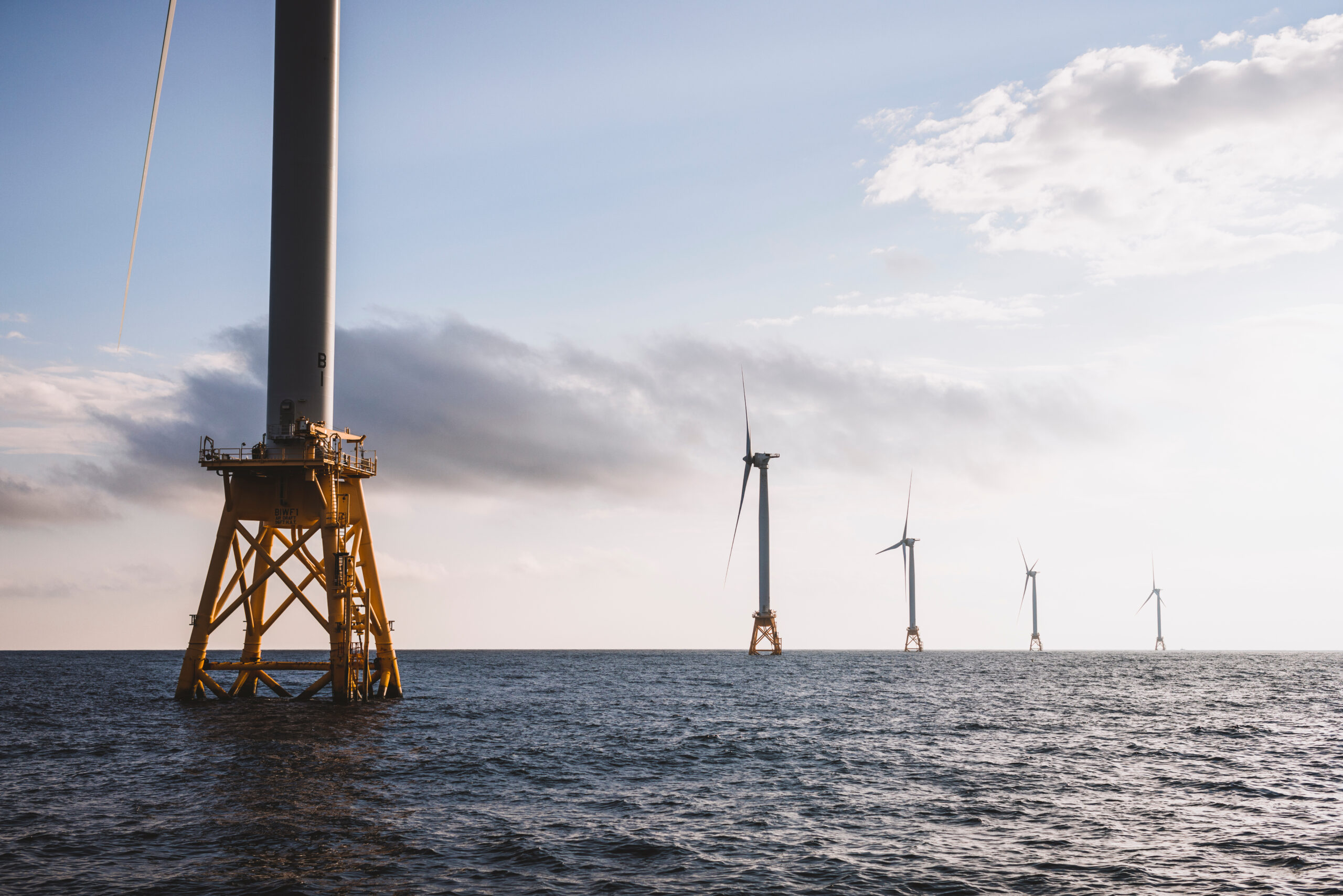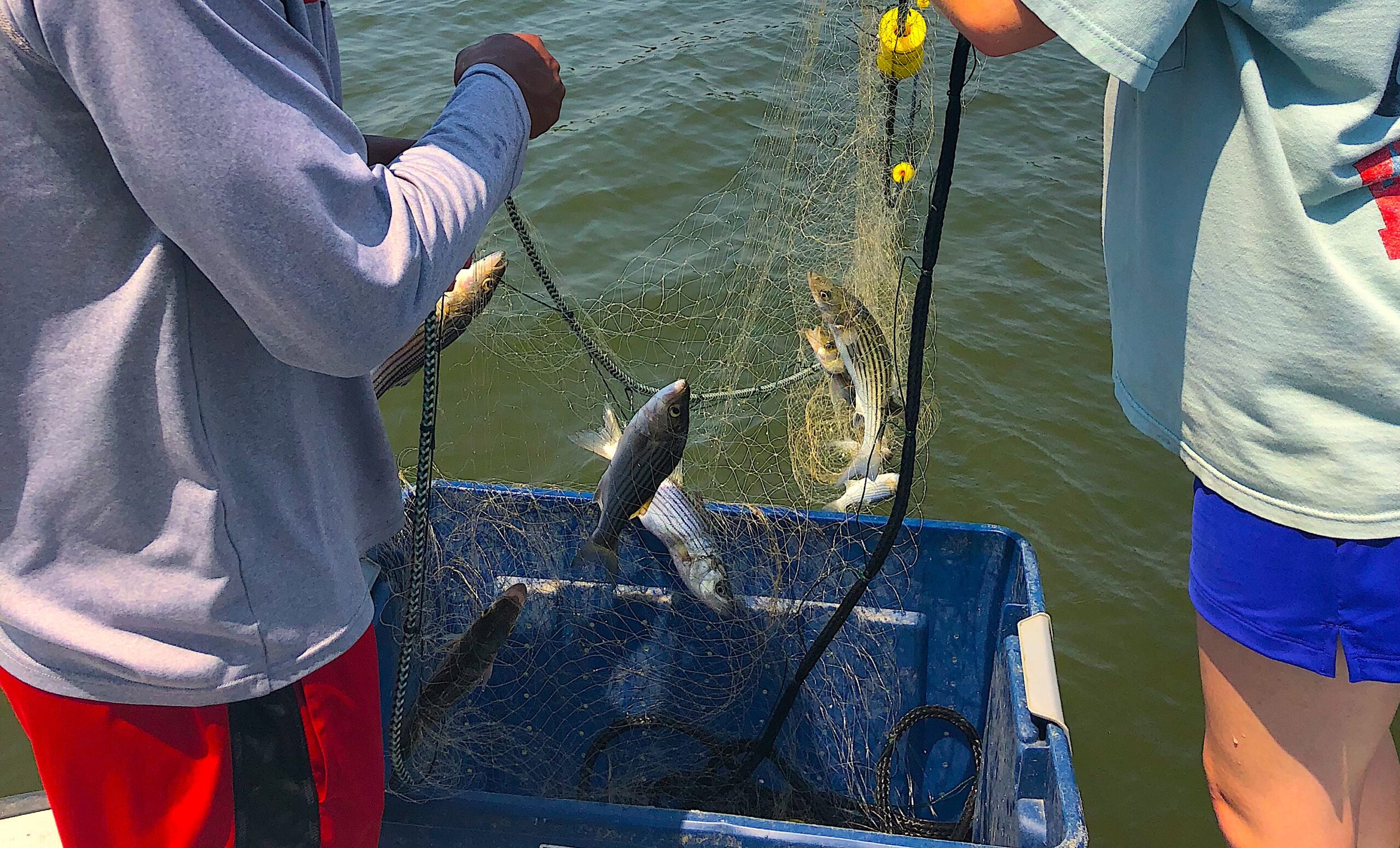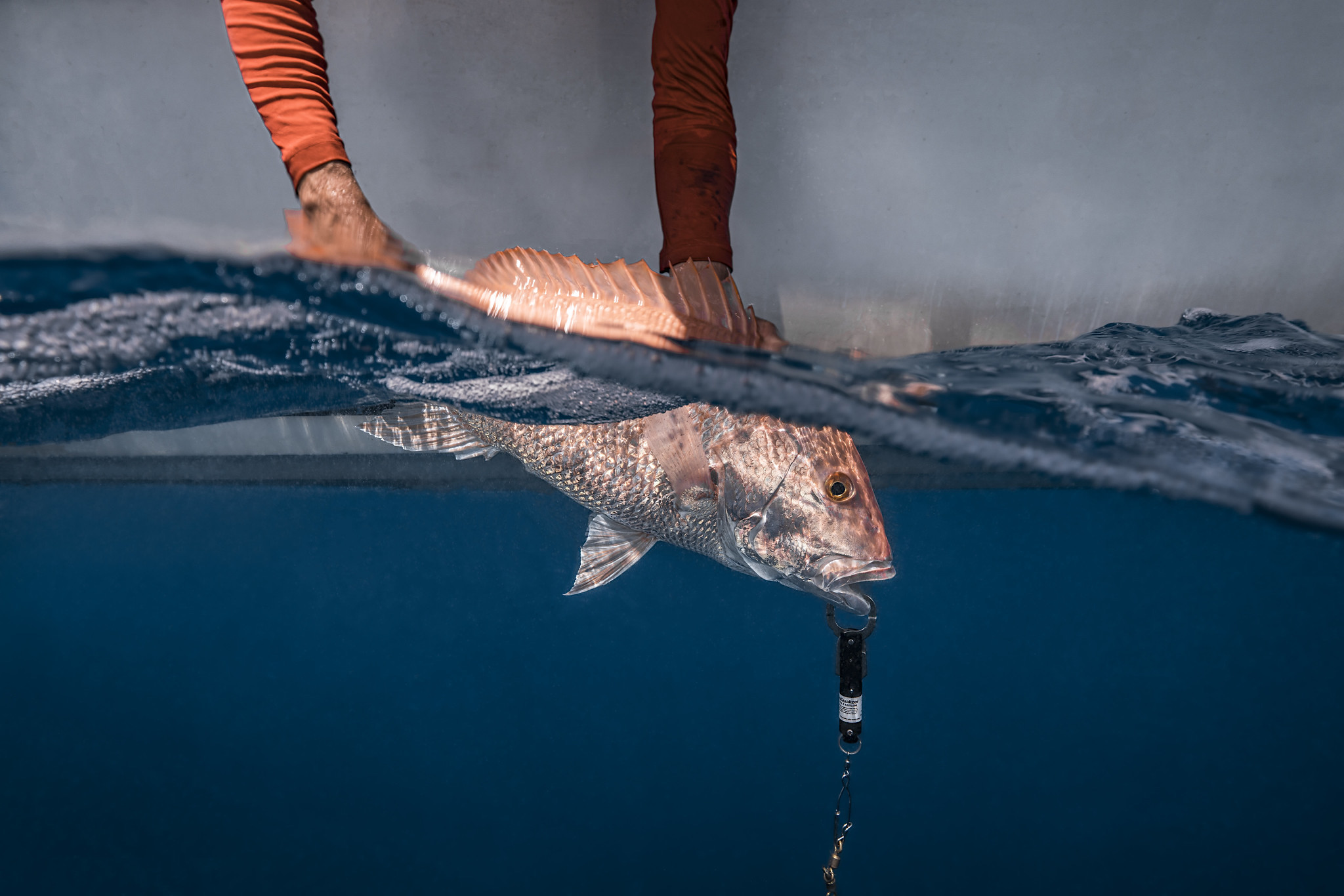How Does Seagrass React to Environmental Changes?

Genetically diverse seagrass beds on the North Carolina coast might be able to adapt better than seagrass that grows elsewhere
When it comes to grass, Spring is for growing, and that includes grass that grows entirely underwater. A number of species of seagrass have evolved from land plants.
Seagrass ecosystems are facing a global crisis, however, because of human impacts on the coast.
Research Need
Common eelgrass is the dominant seagrass species in the Northern Hemisphere, where it grows in sheltered bays and estuaries. Eelgrass functions as a shoreline protector, a nursery for juvenile fish and other aquatic organisms, and an oxygen source for marine life.
Eelgrass reproduces asexually through the growth of rhizomes that create large beds or meadows in the wetlands, and sexually by seed germination. Male and female flowers are present on the same plant, but they mature at different times, preventing self-fertilization.
Reproducing both sexually and asexually results in different levels of genetic diversity throughout eelgrass’s range, which, in turn, can influence the ability of the species to withstand environmental disturbances.
What did they study?
The researchers examined two seagrass meadows in southeastern North Carolina to determine the genetic structure and diversity between locations. From about a 100-by-100-foot area, the team collected shoots. Ten years later, they resampled the same areas.
The team used laboratory methods to extract DNA. In addition to gathering genetic data, in a subset of shoot samples the team looked at indicators of the health of seagrass meadows.
What did they find?
Genetic diversity was high within each meadow. Generally, there is not diversity within a meadow, but the researchers theorize that the currents at each location — which carry flowering branches farther at each location — resulted in more mixing and higher genetic diversity within each meadow in this study.
Genetic diversity did not significantly differ between the two study locations. Observations also remained relatively unchanged 10 years apart.
In addition, even though the eelgrass at both sites is genetically similar, environmental differences between locations have resulted in different physical characteristics of the eelgrass between sites. The team observed a large amount of variability in the quantities of shoots, roots, and rhizomes. These data suggest an increase in sexual reproduction.
Seagrass meadows in North Carolina are subject to frequent natural disturbances from tropical storms, changes in temperature, and sedimentation. This can favor increased sexual reproduction, which, in turn may lead to greater diversity.
Anything else?
Understanding the genetic structure and diversity of these populations, and how they fluctuate over space and time, will inform the conservation and management of seagrasses in an environment where the effects of climate change are likely to be chronic.
Reading
Allcock, K.E., Kamel, S.J., Willeboordse, P.L., Long, Z.T., Jarvis, J.C. 2022. Spatiotemporal variation in patterns of genetic diversity, genetic structure, and life history across Zostera marina meadows in North Carolina, USA. Marine Ecology Progress Series, 683:53-66.
Kamel is funded by a National Science Foundation grant (OCE 1459384). Jarvis is funded in part by a UNC Wilmington Charles L Cahill Grant and the N.C. Department of Environmental Quality Coastal Recreational Fishing License Fund (2017-H-059).
By Sara Mirabilio
Lead photo: eelgrass, shot from the bottom of the bed, courtesy of E. French-E. Shields/VIMS via CC BY-NC-ND 2.0, CreativeCommons.org.
The text from Hook, Line & Science is available to reprint and republish at no cost, but only in its entirety and with this attribution: Hook, Line & Science, courtesy of Scott Baker and Sara Mirabilio, North Carolina Sea Grant.
- Categories:



